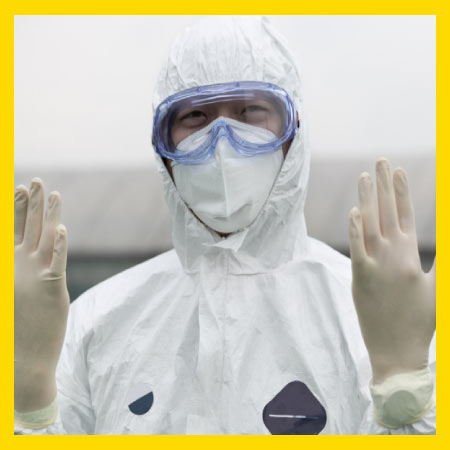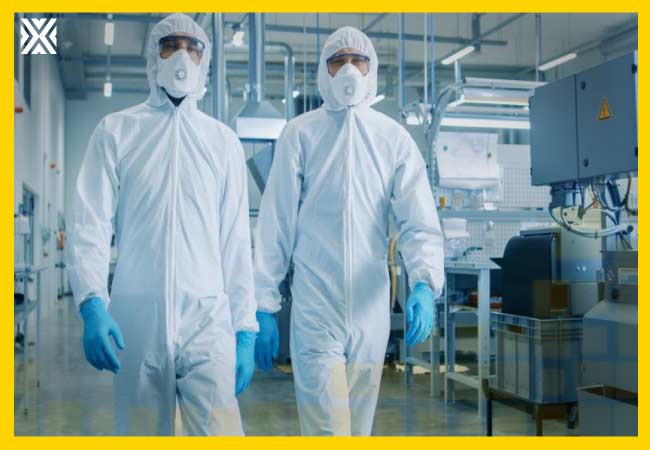Currency
May 17, 2020

Industrial hygiene may not be a household name, but our knowledge base is exactly what is needed to help win this fight. The American Board of Industrial Hygiene (ABIH) defines the discipline as (emphasis added):
“Industrial hygiene is the science of protecting and enhancing the health and safety of people at work and in their communities. Health and safety hazards cover a wide range of chemical, physical, biological and ergonomic stressors. Those dedicated to anticipating, recognizing, evaluating and controlling those hazards are known as Industrial Hygienists. They are professionals dedicated to the well-being of people – at work, at home and in the community.”

A major responsibility of Industrial Hygienists (IHs) is to educate both the workforce and management about the hazards in their workplaces. We know how to evaluate hazards and use all the controls available to mitigate risk. For instance:
• IHs understand the physics of aerosols and how a cough, sneeze or even speech can spread virus-containing droplets through the air, and what it takes to engineer out a hazard using ventilation, filtration and barriers.
• His understand the chemistry of disinfectants and know what is effective at neutralizing the virus and what it takes to effectively decontaminate a person or surface.
• IHs understand physical means of virus destruction such as heat, cold, ultraviolet light and ionization.
• IHs routinely measure the quantity of hazardous substance in a workplace and can verify whether cleaning procedures are working to remove virus surface contamination in a given environment.
• IHs know the ins and outs of personal protective equipment, in particular respiratory protection.
• IHs know how to devise and educate workers on administrative controls.
In the hierarchy of controls engineering controls are at the forefront when it comes to a naturally occurring airborne biological hazard. Where an infection exists isolation of a space by putting it under negative pressure with HEPA filtration is essential to keep the virus from spreading. A NASA study has shown that HEPA filtration can effectively capture the virus even though it is very small (approximately 0.125 micrometers in diameter.)
Barriers are another means of protecting workers. One example is workers in a meat packing plant working side by side, on a production line. Easily cleaned Plexiglas barriers were placed between each worker. This, along with the other controls, improved employee protection. We’ve likely all seen the see-through barriers going up in grocery stores to help separate checkout clerks from the general public.
In the workplace, administrative controls are practices people must participate in to protect themselves. Though social distancing, hand washing, and avoidance of face touching seem like simple rules they must be continually reinforced. Through training sessions, IHs emphasize the importance of these cardinal rules and teach management how to effectively and continually reinforce them.
Housekeeping is of paramount importance in controlling exposure to SARS Cov-2. IHs recommend procedures and disinfectants that neutralize the virus or wash it away on surfaces and equipment. IHs can verify the effectiveness of a housekeeping procedure.
Respiratory protection is a profound area of expertise for the industrial hygienist. Since 1971 IHs have relied on laboratory certification of respirators by the U.S. HHS Department’s National Institute for Occupational Safety and Health (NIOSH), which at that time took over respirator certification from the US Bureau of Mines. NIOSH certifies respirators for a specific range of uses. Any respirator use requires training and fit testing and IHs are able provide this training to workers in many settings.
The pandemic poses a unique problem for healthcare workers and others who must wear respiratory protection when dealing with SARS-CoV-2. The respirator of choice for most, the N95 filtering facepiece respirators (FFR) though manufactured in large quantities, are still not sufficient in number to prevent shortages. These FFRs are meant to be disposed of after a single use, but they have to be reused, often for several days due to the shortage. IHs are trained in the function, selection, cleaning and care of respirators and can advise users of the best ways to deal with FFR reuse in this unique situation.
IHs have also been on the forefront of suggesting the pros and cons of alternative face coverings, including suggestions on what not to use. For instance, furnace filters have been suggested as a face covering material, but should not be used because furnace filters may contain fiberglass that may be released. Cotton bandanas, though inefficient at filtration are okay to use when something better isn’t available to prevent an infected person from unknowingly transmitting the virus. IHs specify other PPE too, e.g. eye, hand, and gowns.
“Industrial hygiene is the science of protecting and enhancing the health and safety of people at work and in their communities. Health and safety hazards cover a wide range of chemical, physical, biological and ergonomic stressors. Those dedicated to anticipating, recognizing, evaluating and controlling those hazards are known as Industrial Hygienists. They are professionals dedicated to the well-being of people – at work, at home and in the community.”

A major responsibility of Industrial Hygienists (IHs) is to educate both the workforce and management about the hazards in their workplaces. We know how to evaluate hazards and use all the controls available to mitigate risk. For instance:
• IHs understand the physics of aerosols and how a cough, sneeze or even speech can spread virus-containing droplets through the air, and what it takes to engineer out a hazard using ventilation, filtration and barriers.
• His understand the chemistry of disinfectants and know what is effective at neutralizing the virus and what it takes to effectively decontaminate a person or surface.
• IHs understand physical means of virus destruction such as heat, cold, ultraviolet light and ionization.
• IHs routinely measure the quantity of hazardous substance in a workplace and can verify whether cleaning procedures are working to remove virus surface contamination in a given environment.
• IHs know the ins and outs of personal protective equipment, in particular respiratory protection.
• IHs know how to devise and educate workers on administrative controls.
Engineering Controls
In the hierarchy of controls engineering controls are at the forefront when it comes to a naturally occurring airborne biological hazard. Where an infection exists isolation of a space by putting it under negative pressure with HEPA filtration is essential to keep the virus from spreading. A NASA study has shown that HEPA filtration can effectively capture the virus even though it is very small (approximately 0.125 micrometers in diameter.)
Barriers are another means of protecting workers. One example is workers in a meat packing plant working side by side, on a production line. Easily cleaned Plexiglas barriers were placed between each worker. This, along with the other controls, improved employee protection. We’ve likely all seen the see-through barriers going up in grocery stores to help separate checkout clerks from the general public.
Administrative Controls
In the workplace, administrative controls are practices people must participate in to protect themselves. Though social distancing, hand washing, and avoidance of face touching seem like simple rules they must be continually reinforced. Through training sessions, IHs emphasize the importance of these cardinal rules and teach management how to effectively and continually reinforce them.
Housekeeping is of paramount importance in controlling exposure to SARS Cov-2. IHs recommend procedures and disinfectants that neutralize the virus or wash it away on surfaces and equipment. IHs can verify the effectiveness of a housekeeping procedure.
Personal Protective Equipment
Respiratory protection is a profound area of expertise for the industrial hygienist. Since 1971 IHs have relied on laboratory certification of respirators by the U.S. HHS Department’s National Institute for Occupational Safety and Health (NIOSH), which at that time took over respirator certification from the US Bureau of Mines. NIOSH certifies respirators for a specific range of uses. Any respirator use requires training and fit testing and IHs are able provide this training to workers in many settings.
The pandemic poses a unique problem for healthcare workers and others who must wear respiratory protection when dealing with SARS-CoV-2. The respirator of choice for most, the N95 filtering facepiece respirators (FFR) though manufactured in large quantities, are still not sufficient in number to prevent shortages. These FFRs are meant to be disposed of after a single use, but they have to be reused, often for several days due to the shortage. IHs are trained in the function, selection, cleaning and care of respirators and can advise users of the best ways to deal with FFR reuse in this unique situation.
IHs have also been on the forefront of suggesting the pros and cons of alternative face coverings, including suggestions on what not to use. For instance, furnace filters have been suggested as a face covering material, but should not be used because furnace filters may contain fiberglass that may be released. Cotton bandanas, though inefficient at filtration are okay to use when something better isn’t available to prevent an infected person from unknowingly transmitting the virus. IHs specify other PPE too, e.g. eye, hand, and gowns.









